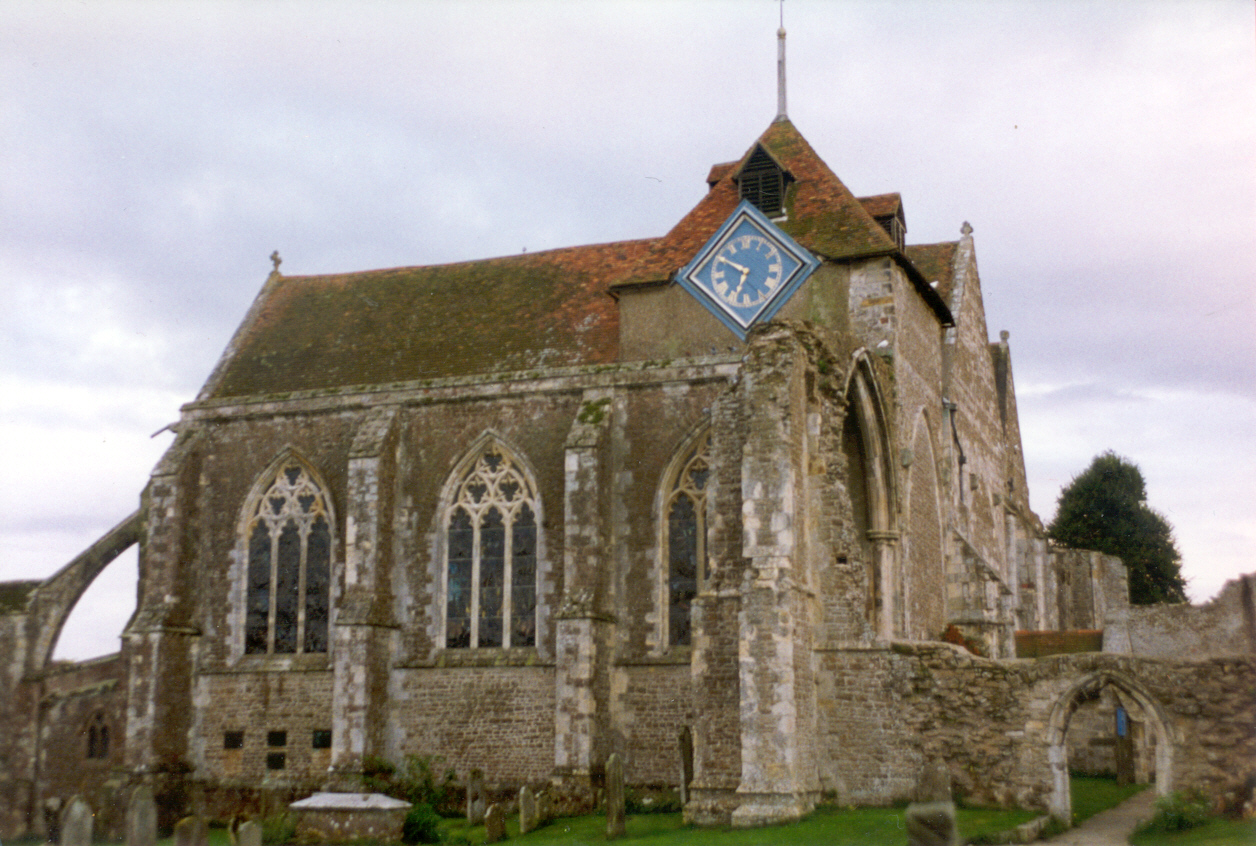Parish Church Clocks
That parish churches have been at the centre of English community life for more than a millennium remains among the staple cliches of contemporary media. For sagas from The Pallisers to The Archers; for detectives' homes from Oxford to St Mary Mead; on stage and in film; the church is a key social and geographical space.

Figure 1. New Winchelsea, Sussex
The juxtaposition of churches' centrality in the routine representation of local communities, and of the sustained fall in the number of practising Christians over several decades, is only a contradiction if we focus on churches as sacred buildings. In early modern England churches were more important than that. They were also important for many secular purposes, timekeeping among them, and church clocks are a similarly familiar feature of the church buildings themselves. So familiar indeed that senses of clocks and clock-time as historically emergent objects seem lost. Around 1600, Shakespeare's Julius Caesar several times has inhabitants of imperial Rome made aware of the time of day, and time passing, by the striking of clocks.
More plausibly, since at least there were mechanical clocks in its late-fourteenth century setting, the action in Shakespeare's Henry V at one point hinges on the striking of a church clock. Written nearly two centuries later, the labourer-poet John Clare's Shepherd's Calendar,
In addition to this introduction, this part of the site has seven sections, accessible from the menu to the left. One places church clocks in the context of other clocks and timekeeping devices in early modern England. The next three focus on churchwardens, their accounts, and argue that these are a generally reliable source of evidence on the presence or absence of parish church clocks. The next two sections present findings on the clocks visible in churchwardens’ accounts, on various facets of the clocks themselves and their makers. Finally, attention turns to the several thousand parishes without accounts via a searchable database of incidental references to church clocks in other sources. Virtually all sources other than churchwardens’ cannot provide reliable negative evidence of church clocks, so the database is by nature an unsystematic compendium. Nevertheless, as the only location at which such material is brought together, the database is a convenient resource, to which I hope readers will be willing to contribute information using the email report form accessible here. All information will of course be acknowledged both direct to the sender, and on the site.
(figure 1). .
Trends in the numbers and distribution of church clocks
The (figure 2).
.
.
.
.
Figure 3.
.

Figure 4.
.
.
.
.
In the (figure 4).
.
.
.
.

Figure 5.
The .
Clocks
Striking clocks .
Across England, .
.
.
.
.
Figure 6.
From .
In .

Figure 7.
recover.
Clocks in
).
.
The range of parishes with accounts
It is best.
infeasible.
Estimating
clocks.
.
.
Hypothesising the audibility of time-signalling
m
Evidence
Stages
Model results
